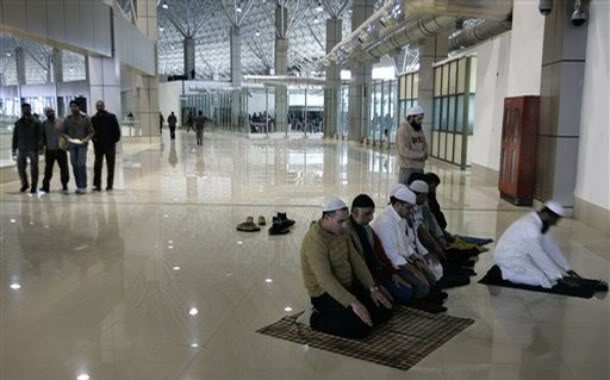Is Combining Prayers in the Hanafi School Possible?
Hanafi Fiqh
Answered by Shaykh Abdul-Rahim Reasat
Question: Assalamu alaykum
I have heard that Shah Waliullah stated that one can combine Dhur and Asr prayer between the the early and late Asr time (i.e. between time when the the shadow is more then length up till the time of double the length). Is this a valid opinion in Hanafi School?
Answer: Wa ‘alaykum as-salam wa rahmatullah wa barakatuh
Thank you for your question.
Shah Waliullah’s position is not a valid opinion in the Ḥanafi school, therefore one may not combine these prayers. The position of the school is that it is not valid to combine Ẓuhr with ʿAṣr, nor Maghrib with ʿIshāʾ unless one is in a state of Iḥrām at ʿArafāt and Muzdalifa on the 9th and 10th of Dhul-Ḥijja.
Any other type of combination is only superficial: one delays the first prayer to just before the end of its time, and after praying it he performs the second prayer right at the beginning of its time. This is allowed. (Marāqi al-Falāḥ).
Following Non-Ḥanfīs
Having said this, there are four reliable schools of Law, and one is obliged to follow one of them when it comes to the rulings of the Sharīʿa. So, based on what Shaykh Abdul-Ghanī al-Nābulsī, the great Ḥanafī polymath, said, one may follow any school in relation to any position as long as all the conditions of the school in question are fulfilled.
Therefore, one may perform Ḥajj as a Mālikī, give Zakat as a Ḥanafi and pray as a Shāfiʿī as long as one knows and applies all of the conditions each of these schools has for that act of worship. so, if one was to learn these conditions and apply them it would be valid to combine based on another school (Abdul-Ghanī al-Nābulsī, Khulasat al-Tahqiq Fi Bayan Hukm al-Taqlid wa al-Talfiq; Ibn Abidin, Radd al-Muhtar).
Wisdom and Obligation
Shah Waliullah al-Dihlawī felt that originally there were only mean to the three prayer times: Fajr, Ẓuhr and Maghrib, and that the other two prayers were added so that there were not any long periods of time bereft of the remembrance of Allah. Therefore, combination of prayers was legislated to reflect the original ruling.(Hujjat Allah al-Bāligha).
This is his attempt to deduce on of the wisdoms behind the way in which rulings are laid out in the Sharīʿa. Wisdom is not what obliges us to obey the commands of the Sharīʿā; rather it is the direct commands that have come from Allah and His Messenger (Allah bless him and grant him peace) – be they explicit, or deduced by a mujtahid through valid ijtiḥād.
May Allah grant you the the best of both worlds.
Wassalam,
[Shaykh] Abdul-Rahim Reasat
Shaykh Abdul-Rahim Reasat began his studies in Arabic Grammar and Morphology in 2005. After graduating with a degree in English and History he moved to Damascus in 2007 to study and sit at the feet of some of the most erudite scholars of our time.
Over the following eighteen months he studied a traditional curriculum, studying with scholars such as Shaykh Adnan Darwish, Shaykh Abdurrahman Arjan, Shaykh Hussain Darwish and Shaykh Muhammad Darwish.
In late 2008 he moved to Amman, Jordan, where he continued his studies for the next six years, in Fiqh, Usul al-Fiqh, Theology, Hadith Methodology and Commentary, Shama’il, and Logic with teachers such as Dr Ashraf Muneeb, Dr Salah Abu’l-Hajj, Dr Hamza al-Bakri, Shaykh Ahmad Hasanat, Dr Mansur Abu Zina amongst others. He was also given two licences of mastery in the science of Qur’anic recital by Shakh Samir Jabr and Shaykh Yahya Qandil.
His true passion, however, arose in the presence of Shaykh Ali Hani, considered by many to be one of the foremost tafsir scholars of our time who provided him with the keys to the vast knowledge of the Quran. With Shaykh Ali, he was able to study an extensive curriculum of Qur’anic Sciences, Tafsir, Arabic Grammar, and Rhetoric.
When he finally left Jordan for the UK in 2014, Shaykh Ali gave him his distinct blessing and still recommends students in the UK to seek out Shaykh Abdul-Rahim for Quranic studies. Since his return he has trained as a therapist and has helped a number of people overcome emotional and psychosomatic issues. He is a keen promoter of emotional and mental health.
